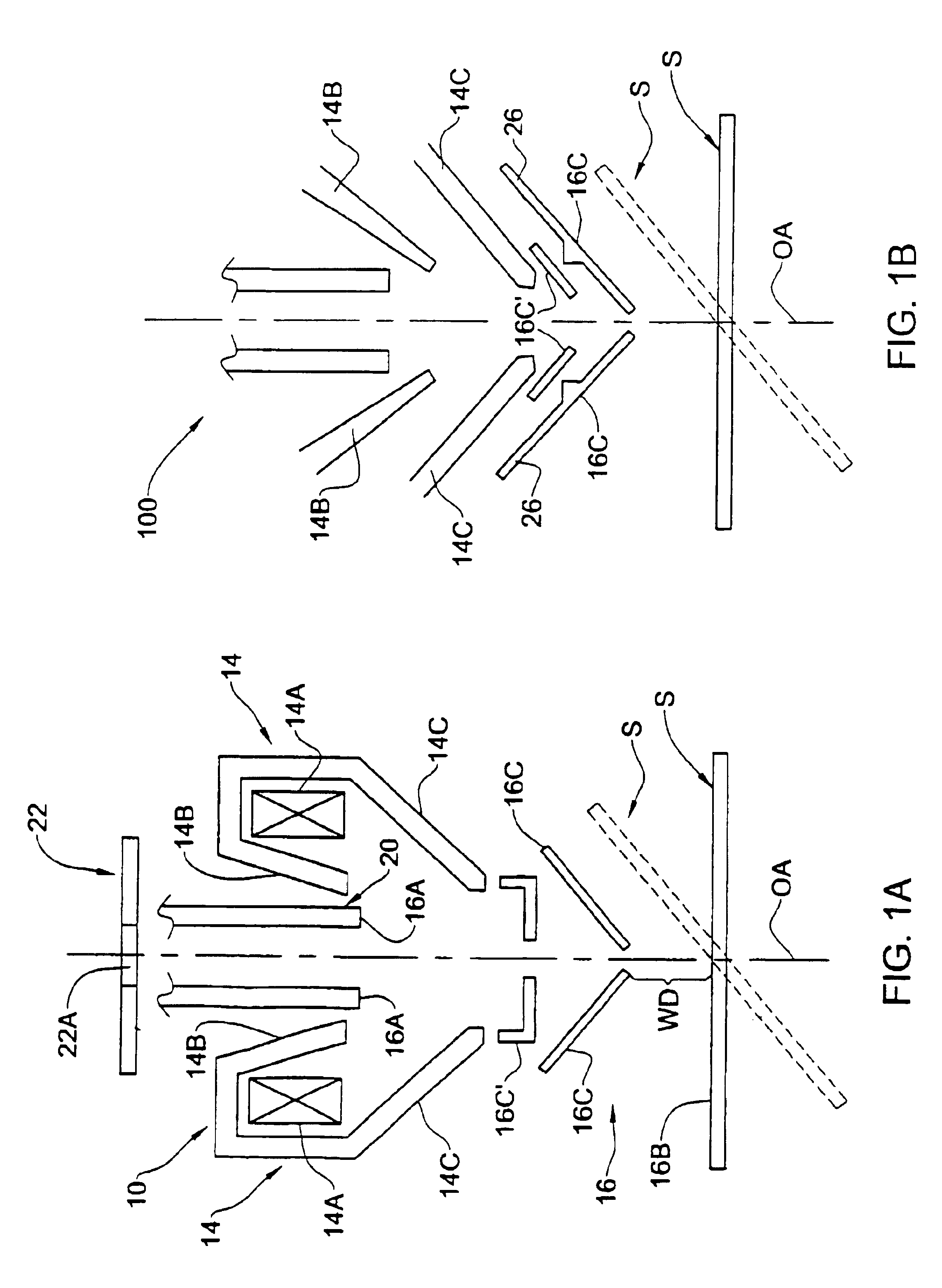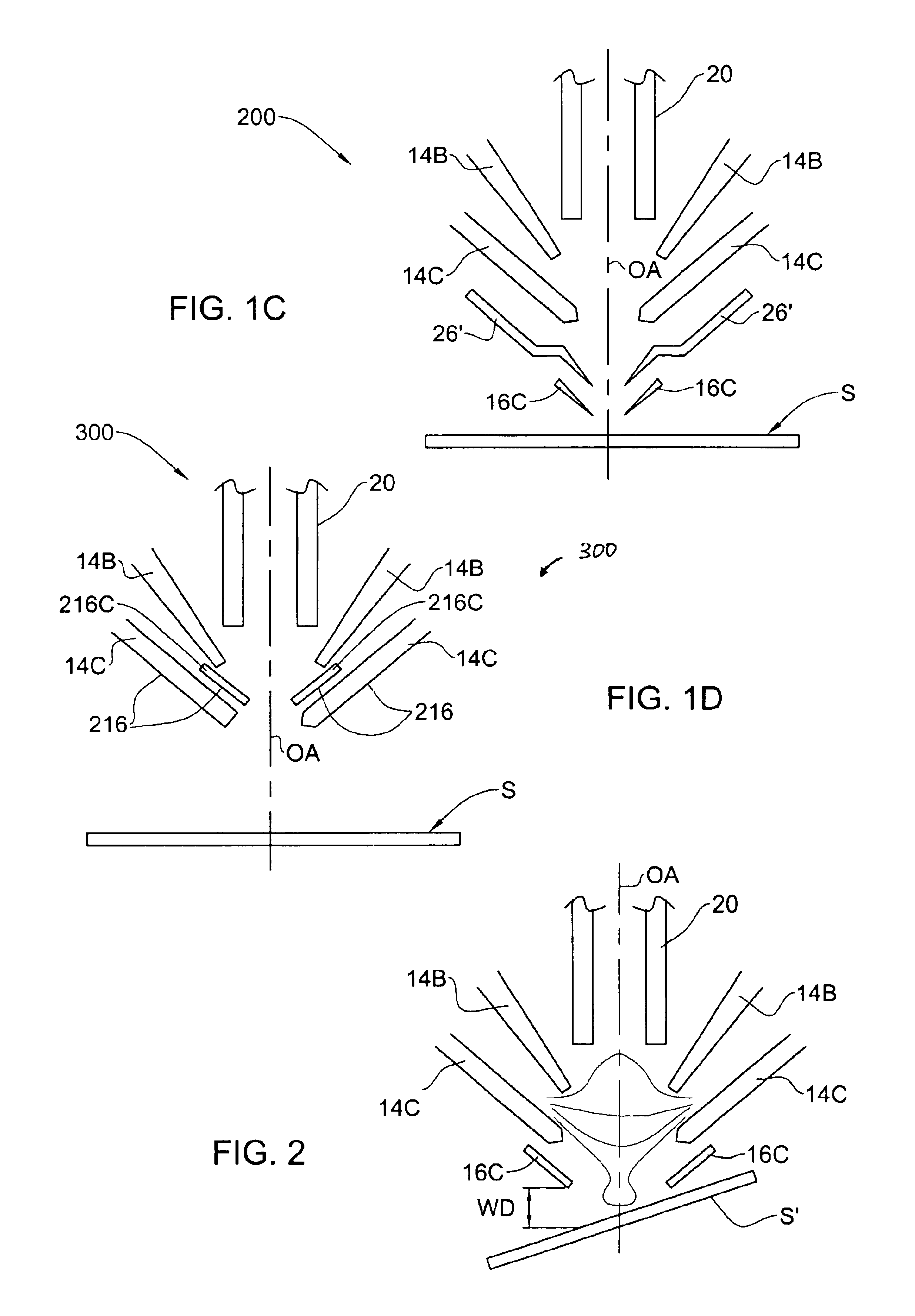Objective lens arrangement for use in a charged particle beam column
a technology of charged particle beam and object, which is applied in the field of inspection/measurement techniques, can solve the problems of reducing the electrostatic field in the vicinity of the sample, impede the collection of secondary electrons, and the approach does not provide sufficient reduction of the chromatic primary beam, so as to reduce the minimal energy of the effectively focusable charge particle beam
- Summary
- Abstract
- Description
- Claims
- Application Information
AI Technical Summary
Benefits of technology
Problems solved by technology
Method used
Image
Examples
Embodiment Construction
[0027]Referring to FIG. 1A, there is schematically illustrated a part of a charge particle beam column (such as an SEM) including an objective lens arrangement, generally at 10, associated with a sample S under inspection. The lens arrangement 10 includes a magnetic lens 14 and an electrostatic lens 16. Further provided in this part of the charged particle beam column is an in-lens detector 22 located above the lens 14 such that an optical axis OA of the lens arrangement passes through an opening 22A (primary beam hole) in the detector.
[0028]The magnetic lens 14 is formed by excitation coils 14A and two pole pieces 14B and 14C. The electrostatic lens 16 is formed by following electrodes: electrode 16A—the lower end of an anode tube 20, electrode 16B—the sample's surface, and “cap” electrodes 16C and 16′C arranged in a spaced-apart relationship along the optical axis OA of the lens arrangement between the electrodes 16A and 16B. The electrodes 16C and 16C′ are separately operated by ...
PUM
 Login to View More
Login to View More Abstract
Description
Claims
Application Information
 Login to View More
Login to View More - R&D
- Intellectual Property
- Life Sciences
- Materials
- Tech Scout
- Unparalleled Data Quality
- Higher Quality Content
- 60% Fewer Hallucinations
Browse by: Latest US Patents, China's latest patents, Technical Efficacy Thesaurus, Application Domain, Technology Topic, Popular Technical Reports.
© 2025 PatSnap. All rights reserved.Legal|Privacy policy|Modern Slavery Act Transparency Statement|Sitemap|About US| Contact US: help@patsnap.com



